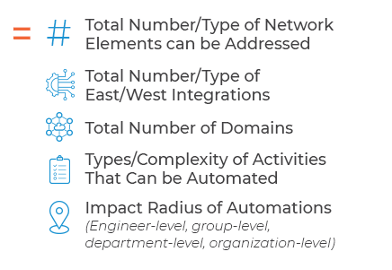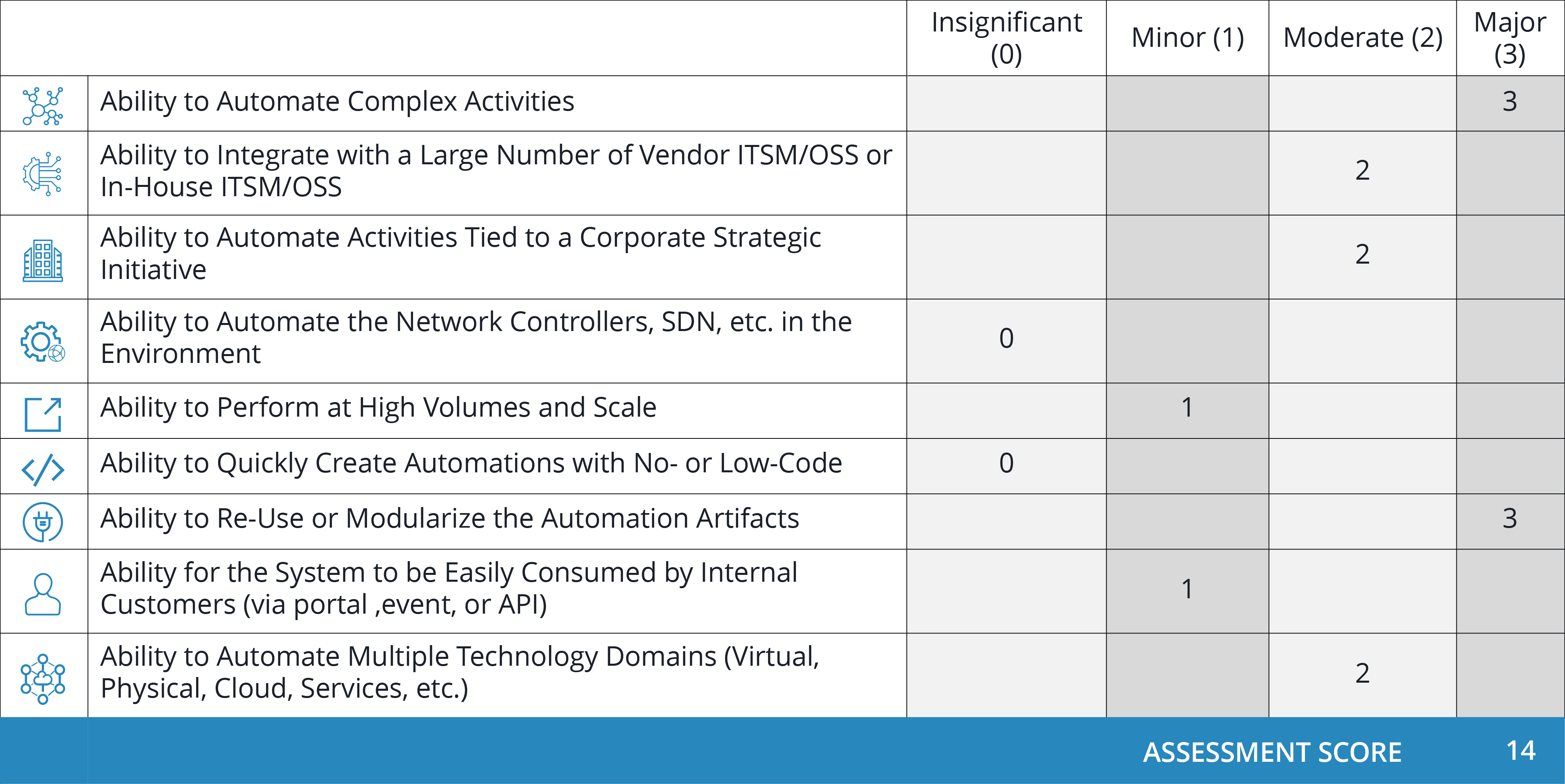Over the past month, I’ve been working on a blog series focused on helping organizations to understand why it’s critical for network teams to start thinking about how network automation will not just help them to do their jobs more effectively, but how automation will benefit their business. In this blog series, I am breaking down the four key metrics that help teams measure the impact and build their business case for network automation:
By using these metrics, it becomes much easier to successfully communicate the business benefits of network automation with executive leadership. In this last blog of the series, I’d like to take a deep dive into the fourth and final key metric, “Versatility & Reach” to help better understand why and how to calculate this metric.
Why Measure Versatility & Reach
The focus of our final metric is to prioritize solutions that provide high levels of versatility and the ability to connect to the network, systems, and tools at scale. By doing this, we’re answering the following questions with this metric:
- Versatility – How flexible is the platform for automating different kinds of activities?
- Reach – How scalable is the solution to address high volumes of activities, devices, and domains?
A major benefit of capturing this metric is to better understand which automation solution will have the most impact to your organization’s priorities as well as which one will support you best long-term.
How to Measure Versatility & Reach
The math for calculating versatility and reach is not as straightforward as the other metrics, but can be determined by using a combination of the following metrics:

When looking at this metric, you’ll want to identify which of the items listed here make sense within the context of your organization and business needs. For some, the total number of network elements to be managed will be extremely high, so the ability to deliver automation capabilities and performance at high scale will be important. For others, the complexity and diversity of use cases that can be automated will be important. Think of environments that require interactions with physical network elements along with cloud environments and multiple technologies.
Evaluation Matrix
Because there’s no easy formula for calculating Versatility and Reach, we’ve been able to create a table or matrix model to help put some weight to the listed items for this metric. This example matrix is used to evaluate the suitability of a specific automation solution to address a group’s priorities:

The factors listed on the left include requirements such as the ability to automate complex activities and the ability for the solution to provide exposure to other internal customers via portal, API, or events. On the right, the table lists each of the factors, with the horizontal axis representing the level of importance that the organization has assigned to each factor – with low importance being assigned to zeros or ones, and higher importance being twos and threes.
The factors that make up this matrix will be very situation and organization specific. What’s important to one group may have very little significance to another team. Our recommendation is to use this as a model, but to customize it for your team’s specific priorities and business requirements.
How to Use this Metric
Teams that are in automation platform selection phase can use this metric to evaluate the suitability of any given solution to meet the organization’s priorities. It can also be used after implementation to benchmark the solution to see how well it delivered against those priorities, and it can be used to measure the growth curve of the solution as it automates use cases that require greater scale or reach over time.
The metric is very powerful when determining the longevity of the solution you’re evaluating as well as comparing the benefit you receive from that solution over time to validate you made the right choice.
Be sure to check out my previous blogs breaking down the first three metrics, Workload Unit Costs, Efficiency & Productivity, and Time-to-Complete or check out the overview blog. Also, to get a more in depth look into all 4 key metrics and how to create a metric driven automation strategy, watch Itential’s on-demand webinar, “Measuring & Maximizing the Business Impact of Network Automation.”





